Circular Weir Simulation, Eulerian Three-Phase (Air, Water, and Sand), ANSYS Fluent Training
$100.00 Student Discount
- The problem numerically simulates Three-phase flow over a Circular Weir using ANSYS Fluent software.
- We design the 3-D model by the Design Modeler software.
- We Mesh the model by ANSYS Meshing software, and the element number equals 4770.
- We use the Eulerian Multi-Phases model to define three phases of flow, including air, water and sand.
To Order Your Project or benefit from a CFD consultation, contact our experts via email ([email protected]), online support tab, or WhatsApp at +44 7443 197273.
There are some Free Products to check our service quality.
If you want the training video in another language instead of English, ask it via [email protected] after you buy the product.
Description
Description
The present problem simulates the three-phase flow of water, air, and sand flowing over a circular weir using ANSYS Fluent software. We perform this CFD project and investigate it by CFD analysis.
If any obstacle is placed on the path of the fluid flow, it causes the fluid level to rise behind it and increase its velocity, eventually leading to fluid overflowing on the obstacle. These obstacles are regarded as weirs. Weirs have different uses depending on their shape and are mostly used in civil engineering.
The present model is designed in two dimensions using the SpaceClaim. The meshing of the present project has been done using ANSYS Meshing software. The element number is 4,770.
Circular Weir Methodology
In this project, the water will enter the computational domain with a velocity of 1m/s, and it flows over the sand bed behind the weir. The water flow will lift some of the sand and carry it as it flows over the weir.
The standard k-epsilon model is exploited to solve fluid flow equations, and the Eulerian multiphase model is used to investigate the motion and interaction of the existing phases.
Circular Weir Conclusion
At the end of the solution process, two-dimensional contours related to the volume fraction of the air, water, and sand phases, pressure, streamlines, and velocity vectors are obtained.
As can be observed in the sand volume fraction contour, the water flow will lift some of the sand from its bed and move it as the water flows over the weir, now in the long term, the sand bed behind the weir will be washed completely, and the blank space behind the circular obstacle will turn into a tangential path for water.
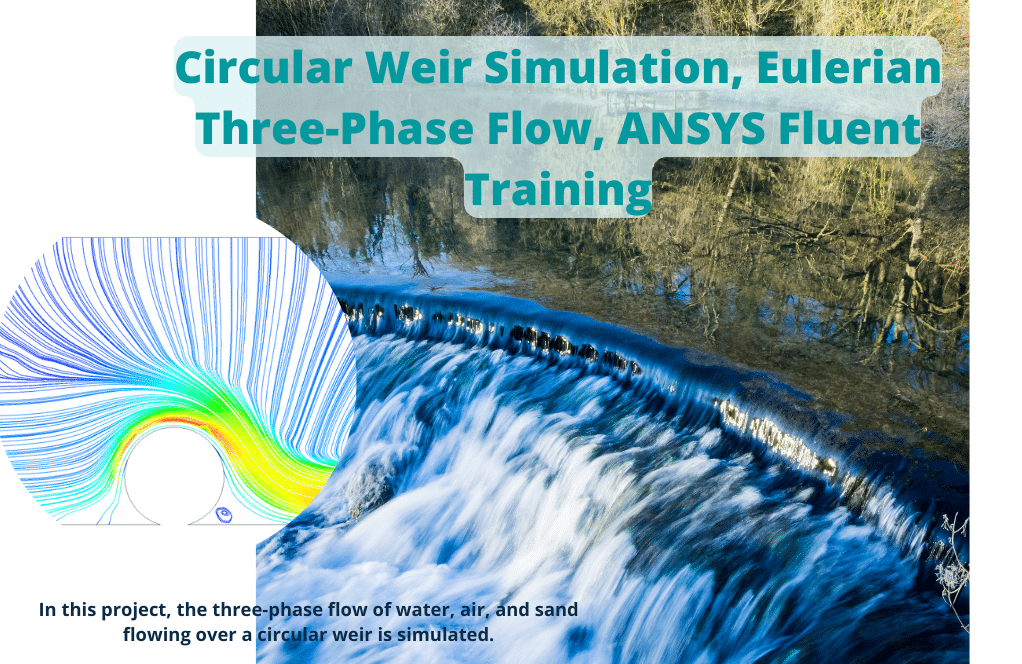
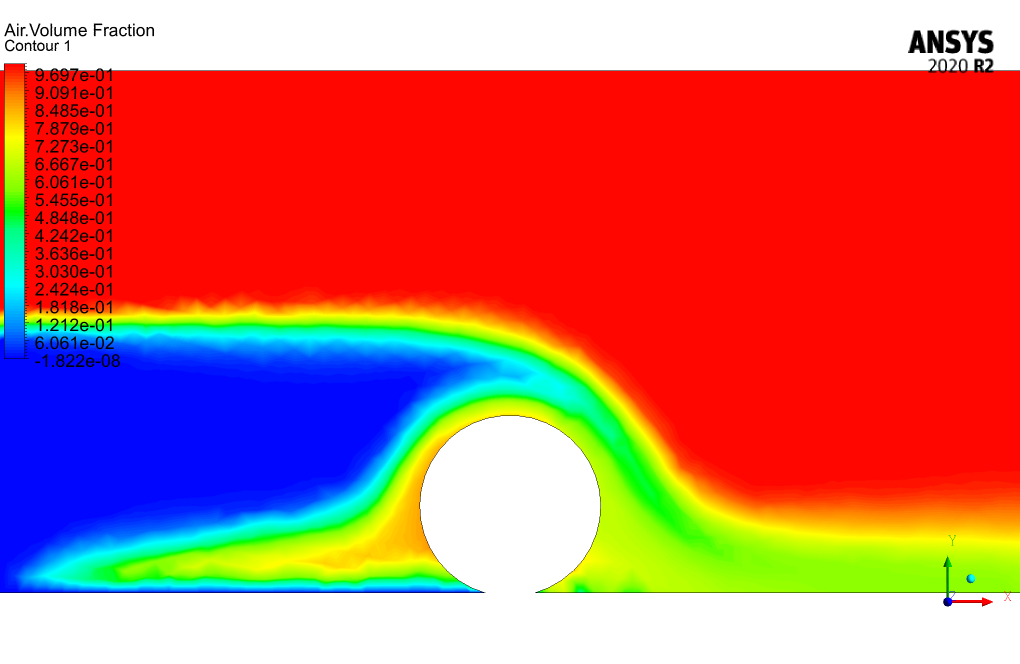
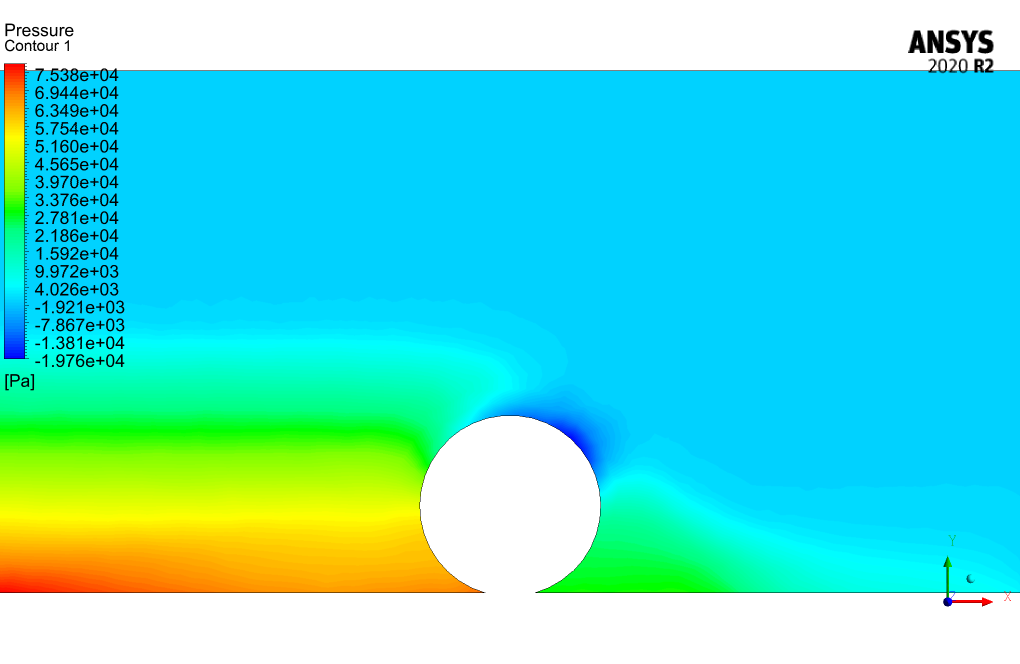
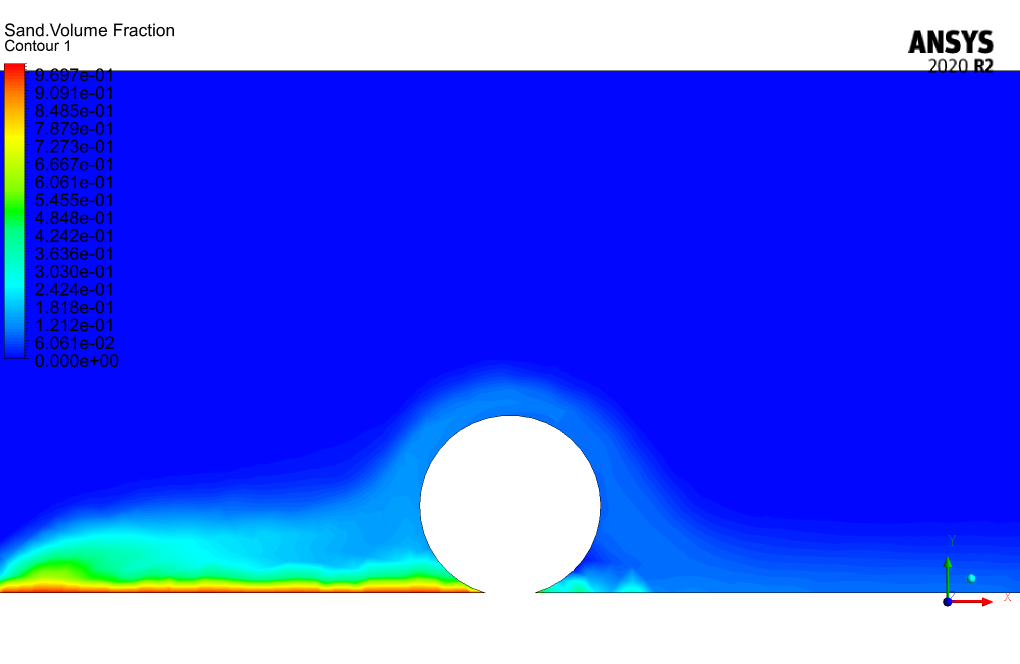
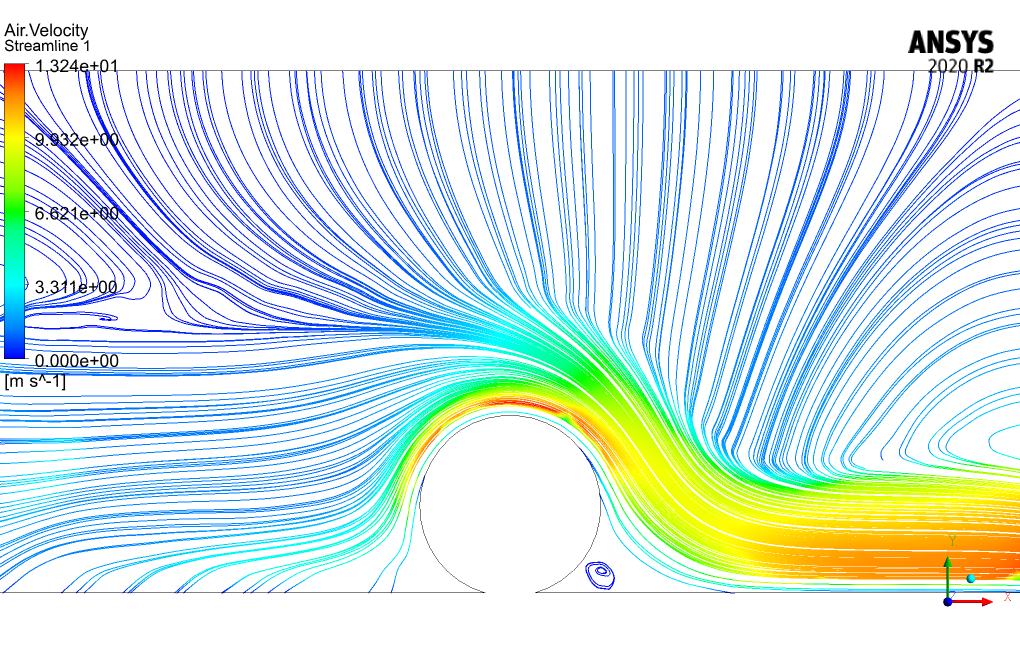
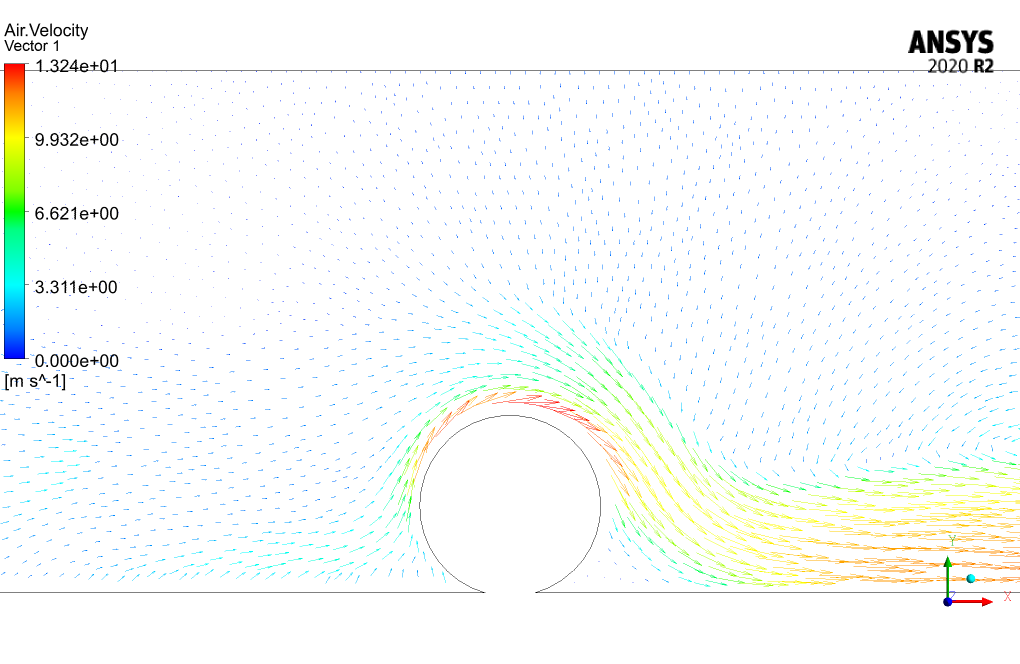
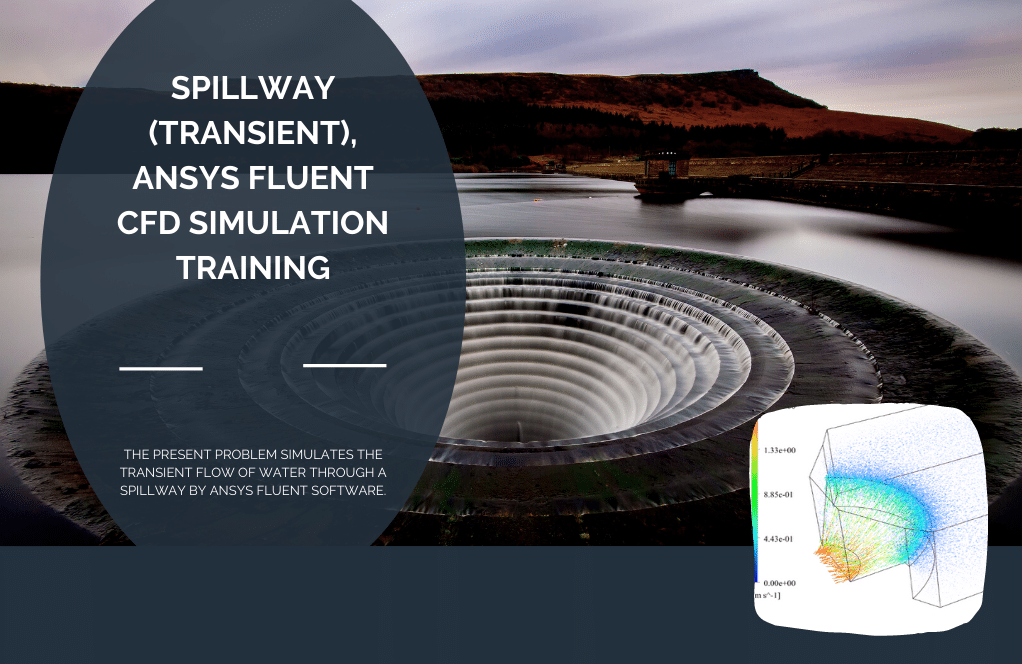
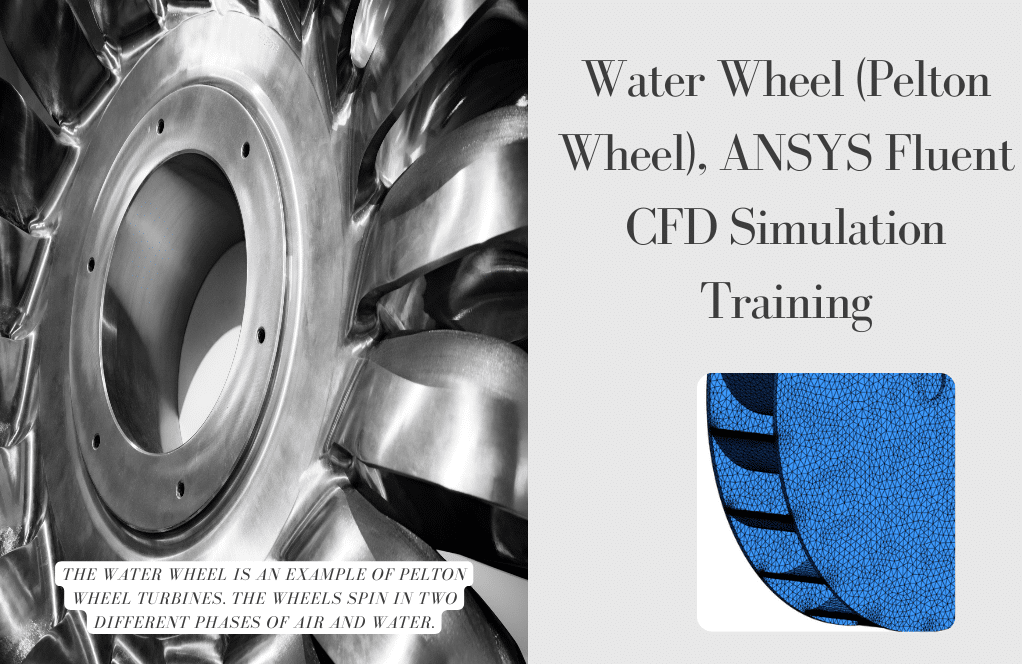
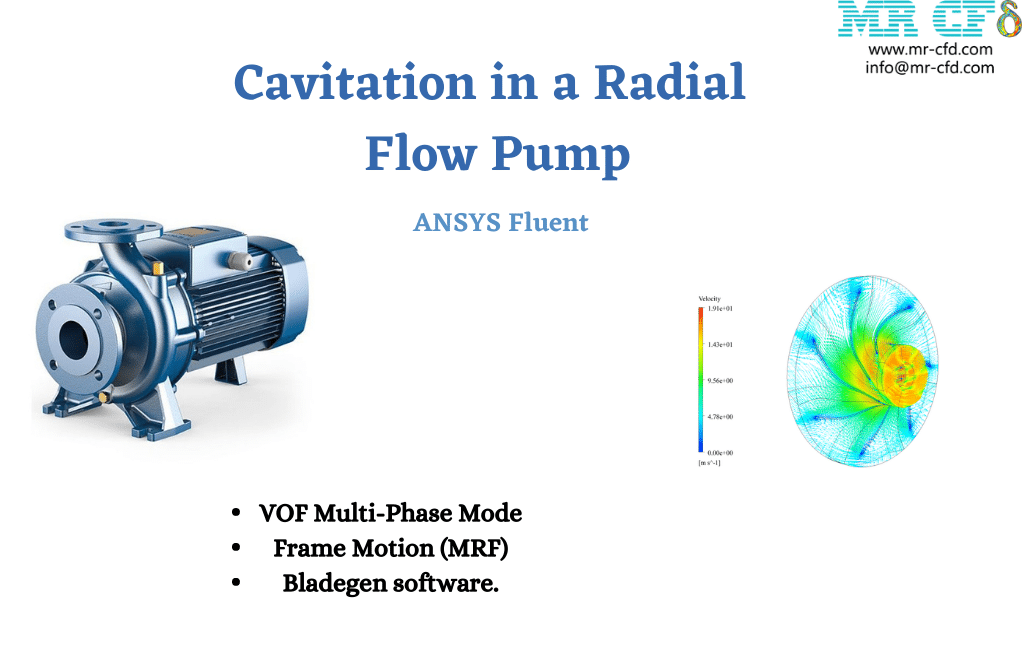
Grady Bogisich II –
The detailed exploration of the flow dynamics of a three-phase system was striking, particularly the interplay between water, air, and sand over the circular weir. The application of CFD to visualize and quantify such complex interactions provides invaluable insights – useful in various engineering solutions. A splendid use of simulation technologies!
MR CFD Support –
Thank you for your positive feedback! We’re thrilled to hear that our Circular Weir Simulation product provided you with clear insights into the complex interactions between different phases in fluid dynamics. Your satisfaction with the accuracy and clarity of our simulation confirms our commitment to excellence in CFD training and education. If you ever have more to explore or discuss, we’re always here to help. Thank you for choosing MR CFD!
Casey Braun –
The training module on Eulerian Three-Phase flow over a circular weir SIM was fab! The clear visuals on how water picks up sand and the sheer detail in streamlines really helped me grasp complex multiphase flows. Truly enlightening!
MR CFD Support –
Thank you for your enthusiastic feedback! We’re truly delighted to hear that the visual details and the comprehensive analysis in the Eulerian Three-Phase flow simulation training added clarity to your understanding of complex flow phenomena. Your satisfaction with the learning module means a lot to us!
Brycen Nikolaus –
I found the project on the Circular Weir Simulation fascinating. It clarified a lot of concepts about the weir flow for me. The visuals were particularly helpful in understanding the interaction among the phases. Can’t wait to apply this knowledge in my fieldwork!
MR CFD Support –
Thank you for your kind words! We are thrilled to hear that our Circular Weir Simulation has provided you with clear insights and practical knowledge. If you have any further questions or need additional support for your fieldwork, don’t hesitate to ask. We’re here to help you succeed!
Prof. Myrtis Denesik –
The training for the circular weir simulation sounds fascinating. I noticed the chosen solver is k-epsilon. Could you detail why this specific turbulence model was selected over others for this simulation?
MR CFD Support –
The standard k-epsilon turbulence model was chosen for this simulation because it is known for its robustness and accuracy in predicting the average turbulence quantities, particularly for flows with high Reynolds numbers and in which turbulence is fully developed. In flows over weirs where the free surface is present and complex interaction between multiple phases occurs, the k-epsilon model provides a good balance between computational efficiency and the level of detail required for such multiphase flow simulations.
Melba Mueller I –
The Circular Weir training was great! I appreciated the clear definition of boundaries and the detailed explanation of the Eulerian multiphase model application. See the sand movement was fascinating!
MR CFD Support –
Thank you for the wonderful feedback! We’re delighted to hear that the Circular Weir training added clarity to the simulated process and that the movement of sand using the Eulerian multiphase model made the learning experience fascinating. Your satisfaction is our goal, and we’re glad to have met it. If you ever have any questions or need further clarification on any aspect, feel free to reach out!
Maryse Sanford –
This training was thorough, not only do the comparisons between the Eulerian and Lagrangian frame of reference when it comes to simulating multiphase flows get really clear, but seeing the practical application in such a realistic project is enlightening. I was particularly taken by how particle erosion was handled in the model. Keep up the excellent work!
MR CFD Support –
Thank you for your positive feedback! We’re thrilled to hear that the training provided you with a clear understanding of multiphase flows and their simulation within different frames of reference. It’s fantastic to know that the practical application and particle erosion aspect of the model were particularly useful to you. Your compliments are greatly appreciated, and we look forward to continuing to provide high-quality CFD training materials.
Patience King –
The training was very insightful and demonstrated the multi-phase flow effectively. The visualization of sand being carried by the water as it flows over the weir greatly enhanced my understanding of the concept.
MR CFD Support –
Thank you for your positive feedback! We’re delighted to hear that the training on circular weir simulation helped enhance your understanding of multiphase flow dynamics. Your appreciation motivates us to continue providing high-quality learning materials!
Wilfredo Fay –
I’m impressed by the level of detail in the water, air, and sand interactions over the circular weir in this simulation. The application of this model in civil engineering could provide valuable insights. Great job!
MR CFD Support –
Thank you for your positive feedback! We’re thrilled to hear that our circular weir simulation has met your expectations and provided you with detailed insights into the interaction of multiphase flows. We take pride in bringing high-quality simulations to our clients that can assist in various engineering applications. If you have any further questions or need assistance with any other simulations, feel free to reach out!
Tito Bauch –
The detailed analysis and the conclusion provided for the circular weir CFD simulation are fascinating. Great to see how the flow dynamics over a sand bed behind a weir are explored using the robust combination of the Eulerian multiphase model and the k-epsilon turbulence model.
MR CFD Support –
Thank you for your positive feedback! We’re pleased to hear that you found the simulation of the circular weir using ANSYS Fluent informative and insightful. It’s rewarding to know that our customers appreciate the complexity and detail of our CFD projects. If you have any more questions or need further information on our simulations and training offerings, please don’t hesitate to get in touch.
Howard Dare –
The training module on circular weir simulation using Eulerian three-phase modeling with ANSYS Fluent is outstanding. It provided a solid practical foundation for understanding multiphase flow behavior around civil engineering structures, like weirs. Particularly impressive was how the course dealt with the complex interaction between water, air, and sand, and the visual results were incredibly insightful for conceiving the physical phenomena involved.
MR CFD Support –
Thank you for your positive feedback! We’re thrilled to hear that the training module met your expectations and provided valuable insights into the dynamics of multiphase flows over weirs. Your understanding of the complex interactions you’ve described is exactly what we aim for our users to achieve. If you ever have any more questions or need further assistance, don’t hesitate to contact us.
Prof. Gunnar Corkery –
I am delighted with the clarity of results demonstrated by the Circular Weir Simulation training. The way the air, water, and sand interactions are portrayed is impressive. Fantastic learning tool for CFD analysis!
MR CFD Support –
Thank you for your positive feedback! We are thrilled to hear that you found the Circular Weir Simulation training beneficial and that the interactions between the phases were clearly demonstrated. Your satisfaction is our greatest motivation for creating comprehensive learning materials. If you have any further questions or would like to continue your learning journey with us, please don’t hesitate to reach out.
Devan Balistreri –
The training on circular weir simulation was comprehensive and practical. Applying Eulerian multiphase concepts to simulate air, water, and sand flow dynamics was executed perfectly. As a civil engineering enthusiast, it provided me with deep insights into the weir’s behavior and the influence of flow over sediment displacement—a must-have for anyone looking into hydraulic structures.
MR CFD Support –
We are thrilled to hear that our training on circular weir simulation met your expectations and provided valuable insights into hydraulic structure analysis. Thank you for recognizing the practical applications of the Eulerian multiphase model and its relevance to the civil engineering field. Your positive feedback is greatly appreciated!
Prof. Chelsea Von –
This training sounds quite robust! It’s impressive how the interplay between air, water, and sand has been investigated in this CFD simulation. The attention to detail in capturing the way the sand is lifted and transported by the water flow shows a deep understanding of multiphase flows. It must be quite insightful to see the volume fraction contours and the effects on streamlines and velocity fields due to the weir. Definitely a must-have tutorial for a fluid dynamics enthusiast or a professional working in civil engineering simulations.
MR CFD Support –
Thank you so much for your kind words! We are absolutely delighted to hear that you found the Circular Weir Simulation training useful and insightful. Understanding multiphase flows is crucial in many engineering applications, and we strive to provide comprehensive learning materials to help our users truly grasp these complex interactions. Your feedback is greatly appreciated and encourages us to keep improving our training products!
Ms. Lelia Koepp –
I truly enjoyed learning from the ‘Circular Weir Simulation, Eulerian Three-Phase (Air, Water, and Sand), ANSYS Fluent’ training module. It was fascinating to observe the interactions between the different elements in the simulation. Your clear visualizations and detailed explanations enhanced my understanding phenomenally!
MR CFD Support –
Thank you for your positive review! We’re delighted to hear that our ‘Circular Weir Simulation’ module provided you with valuable insights and a better understanding of fluid dynamics involving multiple phases. It’s great to know that the visualizations and explanations we provided were helpful to you. We pride ourselves on creating educational content that not only informs but also engages our customers. If you need further assistance or have any more questions about CFD analysis, feel free to reach out!
Americo Carter –
The simulation visuals depict the behavior of sand particles very well. Impressive detail in showing how sand erosion can occur over time with water flow. Great learning tool for understanding sediment transport in hydraulic structures.
MR CFD Support –
Thank you for your positive feedback! We are glad that our simulation provides valuable insights into sediment transport phenomena and assists in the understanding of hydraulic structures. If you need further assistance or have additional questions, feel free to reach out.
Peter Rempel –
The practical application and conclusions drawn are quite interesting. The step-by-step methodology ensured I could grasp the intricacies involved in such a complex simulation. Kudos to MR CFD for a comprehensive training module.
MR CFD Support –
Thank you for your positive feedback! We’re delighted to hear that the training module provided a clear and comprehensive learning experience. If you have any more insights or need further assistance, feel free to reach out to us. We’re always here to help enhance your CFD knowledge base!
Mya Predovic –
I had an excellent experience learning through the Circular Weir Simulation training course. The visuals of water interacting with sand while flowing over the circular weir were highly informative. It provided clear insight into the behavior of multiphase flows in civil applications. Thumbs up for including the Eulerian method details and explaining the dynamics involved!
MR CFD Support –
Thank you for your positive review! We are thrilled to hear that you found the training course on the Circular Weir Simulation insightful and that it enhanced your understanding of multiphase flow dynamics in civil engineering applications. We strive to provide high-quality visuals and detailed methodologies to ensure our users have the best learning experience. Your feedback is greatly appreciated!
Dr. Pierre Dooley DVM –
I was fascinated by how accurately the simulation showed the water picking up sand. Can you tell me more about how the multiphase modeling accounts for the interaction between the sand and water?
MR CFD Support –
The Eulerian multiphase model in ANSYS Fluent allows us to account for the interaction between the water and sand by treating each phase as a continuous interpenetrating medium. Momentum and continuity equations are solved for each phase and the interaction between phases is captured through interphase exchange coefficients. In this simulation, these coefficients manage how the sand is lifted and transported by the water flow as it goes over the weir. Additionally, the model accounts for the drag force that sand particles exert on the water flow and vice versa, which contributes to the simulation’s accuracy.
Dr. Camryn Bogisich Sr. –
The Circular Weir tutorial was very informative. Really appreciated the step-by-step guidance and clear explanations for each part of the process!
MR CFD Support –
We’re thrilled to hear that the Circular Weir tutorial met your expectations and helped clarify the simulation process. Thank you for taking the time to share your positive experience!
Raquel Dickens –
The training content sounds comprehensive. My simulation project on the weir closely resembles this one. I’d like to compliment the clarity of the explanations regarding the multiphase flow and the mesh details you provided.
MR CFD Support –
Thank you for your kind words and for recognizing the clarity of our explanations. We are thrilled to hear that our training materials have been helpful for your simulation project. If you have any further questions or need additional assistance, please feel free to reach out.
Ahmed Gaylord –
I’m impressed by the Circular Weir Simulation! The attention to detail in modeling the three-phase flow is commendable. How effectively does the simulation capture the granular nature of the sand movement, and are additional computational concerns like erosion or deposition also accounted for in the training materials?
MR CFD Support –
Thank you for your kind words! The simulation captures the behavior of the sand with a high level of detail due to the use of the Eulerian multiphase model. This allows for the tracking of the volume fraction of each phase within the flow, giving a realistic representation of sand movement. Concerning computational considerations like erosion or deposition, these physical processes involve complex interactions and typically require additional modeling aspects such as defining erosion rates or tracking deposited layers over time. While the primary focus for the given simulation is on the three-phase flow interactions and initial lifting and transport of sand, long-term effects like erosion and deposition necessitate more advanced modeling strategies that might be included in more advanced training sessions.
Katelin Tillman Sr. –
I’m amazed at how the simulation captures the water lifting the sand as it flows over the weir. It’s fascinating! Did the results also show how the design of the weir impacts the sand movement?
MR CFD Support –
Thank you for your positive feedback! Yes, the simulation results demonstrate how the shape of the weir significantly affects the movement of the sand. The circular design induces a specific pattern of water flow and turbulence that contributes to the lifting and transport of sand particles over the weir. Detailed analysis of this behavior helps in understanding and optimizing weir designs for effective sediment management in civil engineering projects.
Perry Dare –
The product was phenomenal! I was particularly impressed with how well the tutorial handled the three-phase flow simulation. Seeing the sand being lifted and carried over the weir was incredibly educational.
MR CFD Support –
Thank you for your kind words! We’re thrilled to hear that the Circular Weir Simulation tutorial exceeded your expectations and provided you with valuable insights into multi-phase flow dynamics.
Dr. Onie Koepp –
I truly appreciated how the Circular Weir simulation allowed visualization of the complex dynamics between air, water, and sand. It helped me to understand the real-world applications of such a system in civil engineering. The detailed execution and the quality of results exceeded my expectations. Great work!
MR CFD Support –
We’re delighted to hear such positive feedback about our Circular Weir Simulation! It’s gratifying to know that our product could enhance your understanding of fluid dynamics in engineering applications. Thank you for your kind words and we look forward to continuing to provide high-quality simulations.